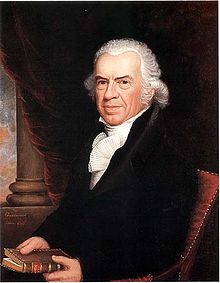By Christopher B. Daly
Here’s a recent article in Worcester magazine introducing readers to the incomparable American Antiquarian Society. It sounds like a museum of antiques, but it is actually the most extensive collection of American newspapers, pamphlets, lithographs, sheet music, and ephemera from the 17th century through the late 19th century.
From the article:
A few of the Society’s most valued materials include a first-edition copy of Lewis and Clark’s journals, printed in the early 1800s; the first printed Bible in British North America, released in 1663; the only known copy of the famous English book “Pamela,” which was the first book printed
in the United States, published and sold by Benjamin Franklin; and the only known original copy of the political cartoon “The Philosophic Cock,” which was an early slam of Thomas Jefferson’s relationship with Sally Hemings, depicting Jefferson as a rooster and Hemings as one of his hens. At the end of last year, one of the few remaining copies of the first book ever written and printed in British North America, in 1640, the Bay Psalm Book, sold at auction for $14.2 million – the American Antiquarian Society just so happens to also have an original copy of the book.
The AAS attracts scholars from around the world, including Ken Burns and Jill Lepore, and it is open to the public.
Here’s a note on the AAS’s history from Wikipedia.
AAS was founded by Isaiah Thomas on October 24, 1812 by an act of the Massachusetts General Court. It is the third oldest historical society and the first to be national in scope.[4]Isaiah Thomas started the collection with approximately 8,000 books from his personal library. The first library building was erected in 1820 in downtown Worcester, Massachusetts. This building was later abandoned and a new building was constructed. It was completed in 1910 and stands on the corner of Park Avenue and Salisbury Street. There have been several additions to this building to accommodate the growing collection, the most recent of which was completed in 2003.
There’s also a story as to why Isaiah Thomas was in Worcester. He was the editor of a Boston newspaper on the patriot side in the American Revolution called The Massachusetts Spy. On April 16, 1775, when the rebels were coming under increasing scrutiny by the British forces occupying Massachusetts, Thomas began to fear that
the redcoats would soon descend on his Boston print shop and put him out of business. So, under cover of darkness, he loaded his presses onto wagons and piled on as many back copies of his own paper as possible, along with any other newspapers or other printed material that would fit. He moved the whole operation to Worcester, safely remote from the coastal bases of the British forces, and prospered there. He later wrote the landmark book, History of Printing in America.
So, a hat-tip to Isaiah Thomas.



